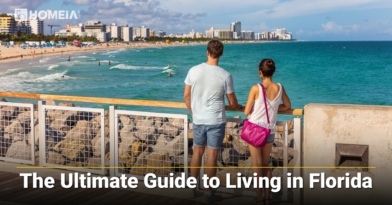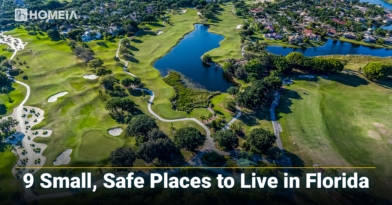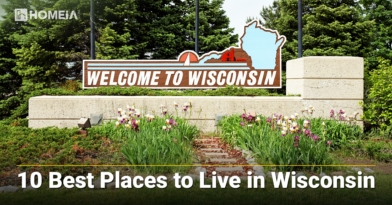10 Key Things to Know Before Buying a Manufactured Home
- Author:by The HOMEiA Team
- Category: Buy House , Real Estate Investing
Start by researching local dealers and becoming familiar with their pricing. Next, visit and tour a variety of models. Choose a plan that suits your needs and budget and customize it. Arrange financing and insurance, then order your home.
It will be built in a factory and transported to your site, where it will be installed, anchored, and hooked up to utilities. Once it passes inspection, you can move in and make it your own.
Manufactured homes can cost anywhere from $20,000 for a basic single-section home to upwards of $200,000 for a multi-section home with all the upgrades. The average cost is about $82,000.
Below are 10 key things you should know when buying a manufactured home in 2021.
Table of Contents:
- 1. The Difference Between a Manufactured Home and Mobile Home
- 2. How to Research Your Options
- 3. How Manufactured Homes Vary
- 4. Where you can buy a manufactured home
- 5. The price of manufactured homes
- 6. Costs You Might Not Expect
- 7. The Pros and Cons of Buying Used
- 8. How to Finance Your Manufactured Home
- 9. How Manufactured Homes are Built
- 10. How Manufactured Homes are Delivered
- Conclusion
1. The Difference Between a Manufactured Home and Mobile Home
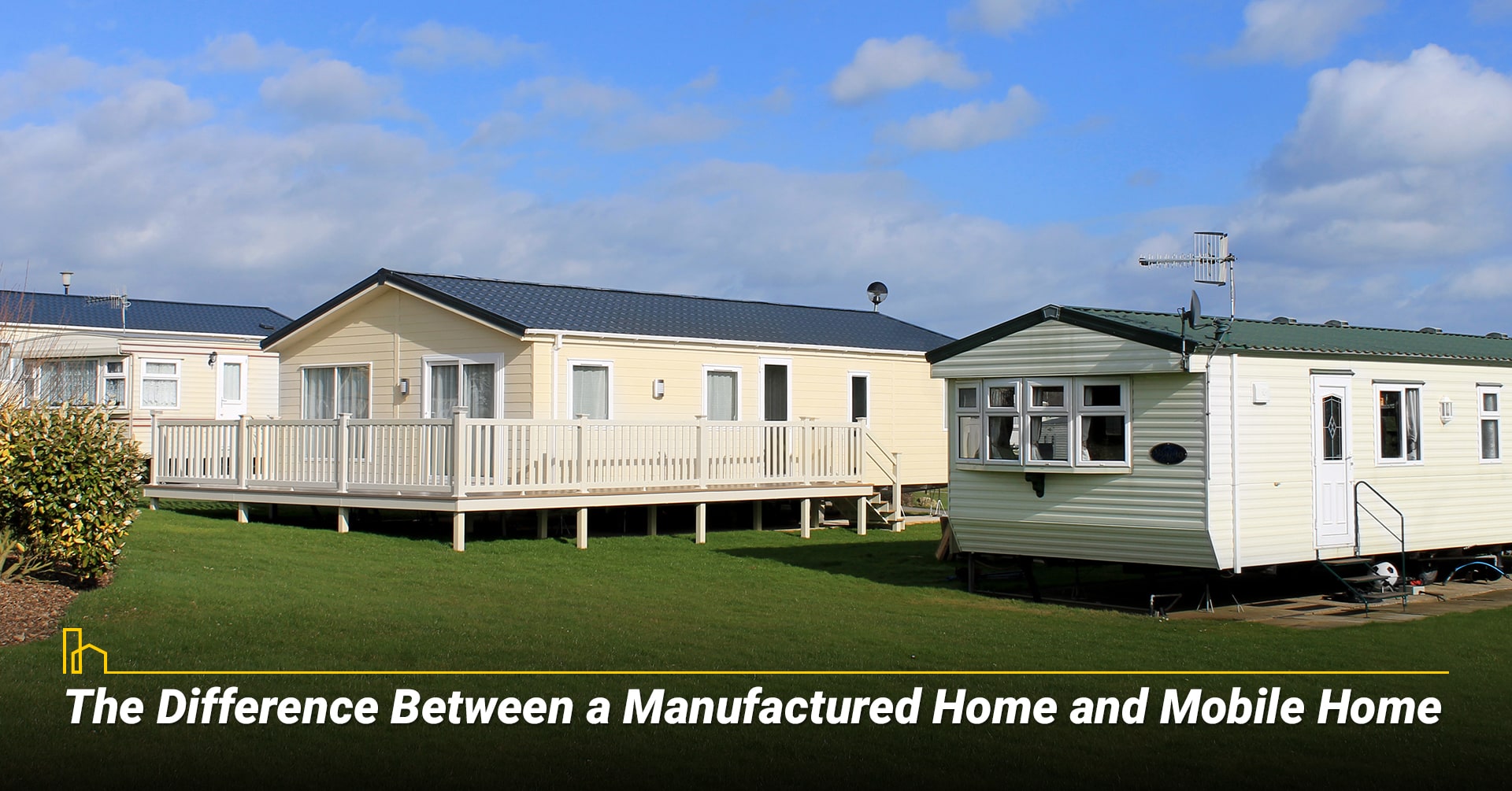
The term “mobile home” is still in common use, so it might surprise you that no home built since 1976 is officially “mobile home.”
On June 15, 1976, the Department of Housing and Urban Development first issued its code regarding what would now be called “manufactured homes.”
“A manufactured home is factory-built housing that is delivered to a piece of land and installed permanently at that location,” explains Bill Packer, Executive Vice President and Chief Operating Officer of American Financial Resources.
The “HUD Code,” as it’s usually called, provides building and quality standards for all structures classed as manufactured homes in the United States. A plate found on each section of a manufactured home, known as the “HUD Label,” gives an identification number for the unit.
Factory-built homes before June 15, 1976, are still properly called “mobile homes.”
The newer term, though, is a better fit, since today’s buildings are not strictly mobile. They are transportable (in one or more sections) from the factory, but once in place they are permanent.
5 Best Places to Live in Texas
Each of the five large cities described are chock-full of neighborhoods that are favored by families with children, young professionals, and retirees. We’ll focus on eight critical attributes that often define a city: History and population, Lifestyle, Affordability, Housing market and neighborhoods, Healthcare and safety, Employment…
2. How to Research Your Options

As with any major purchase, the internet is the best place to start.
Because different manufacturers distribute their homes to different parts of the country, one of the first things to do is to make a list of brands that are available in your area or at your preferred local dealerships. Then you can check out their websites to see photos, layouts, and other particulars.
Read up on how to buy a manufactured home. You will learn that there are different processes for used and new homes.
You might be frustrated to find that it’s hard to get good pricing information through your research. Later in this article we’ll share some information about typical manufactured home prices by size and region, as well as an idea of the different price tiers and the companies that fit within them.
While the internet is a great place to find pictures of shiny new homes, if you’re sure you want to invest in a manufactured home, you may want to spend some money to buy a guide.
One place to find information is The Grissim Ratings Guide to Manufactured Homes. This guide gives the backstory and distinctions among a large number of manufacturers and brands, and provides price ranges or typical costs for their housing lines, along with manufacturing ratings.
What about something akin to the Kelly Blue Book for manufactured homes?
Chris Michaels of FrugalReality.com says, “Just like an automobile, you can see the value of your manufactured home by going to NADA Guides (the same company that values cars, boats, motorcycles, and classic cars). Simply input your make, model, year, condition, and accessories.”
“I have a subscription and it’s always interesting to see how much each variable is worth—[from] wooden steps to an air conditioner—or the change in value based on the state [where] it resides.”
If your go-to search engines aren’t yielding enough results, try a dedicated mobile home search like those found on manufacturedhomes.com or mobilehome.net.
Recommended for you
3. How Manufactured Homes Vary

Because manufactured homes are transported from the factory, they are constructed in individual units with limited width.
“Singles” (also known as “single-wide,” “single-section,” or “SW”) are long, narrow units that are complete in and of themselves. Double- and triple-wide homes (or “doubles/triples,” “multi-section,” or “sectional”) are built and transported in sections, then connected onsite to create a unified home.
Like site-built homes, manufactured homes also vary in total square footage, as well as in numbers of bedrooms and bathrooms. You may be surprised at how many bedrooms can fit in a manufactured home!
Each builder will offer a variety of layouts to choose from; this is a matter of personal taste. So are the finishes, which will range from extremely simple budget options to elegant and pricy appliances, cabinetry, flooring, and more.
Even walls come in more than one variety. VOG walls, common in manufactured homes, are constructed with a layer of vinyl over gypsum panels, and seams are visible. Tape and Texture walls look more like a site-built home, with drywall, seams that are taped and mudded so they don’t show, and a textured and painted finish.
Don’t forget to browse photos of the exteriors. While low-end units can look like a box, high-end homes can be nearly indistinguishable from site-built homes.
Many owners add on skirting, decks, and other outdoor accents to give the home a finished and attractive appearance.
Pros and Cons of Living in Florida
If you’ve decided to make Florida your new home, you’re in luck – it’s a big and varied place, with something for all ages, family dynamics and budget. Continue reading as we dive into some notable Pros and Cons about the state itself, the top cities to live in across a variety of categories, and…
4. Where you can buy a manufactured home

Manufactured homes, like cars, are sold by dealers. Some states require dealers to be licensed.
There are several places to look for manufactured homes for sale near you:
- Independent dealerships, which buy from various manufacturers and sell to homebuyers, just like car dealerships.
- Factory dealers, who work with just one manufacturer and specialize in its products.
- Manufactured home communities: many communities also serve as dealers, and they may have homes ready to lease or buy.
- Real estate listings, especially if you’re considering a pre-owned manufactured home. You can often find these on standard real estate websites.
Spend some time on the websites for each manufacturer, dealer, and community that interests you, and make appointments to visit and get a tour.
Make sure you do your homework before sales reps can break out their hard-sell tactics. Even if you fall in love on the first visit, try to see at least three different sellers to make sure you’re getting an objective perspective.
For preowned homes, take virtual tours online and set up in-person tours if you’re interested. It’s a good idea to find a buyer’s agent to represent you before you visit.
The 9 Cheapest and Safest Places to Live in Florida in 2024
Get ready to explore some of Florida’s safest small communities for the affluents. From coastal towns to pleasant inland locations, there will surely be something for everyone who can afford the lifestyle…
5. The price of manufactured homes

The Manufactured Housing Survey (MHS), collected by the U.S. Census Bureau and sponsored by HUD, is one place to find information about costs. This survey offers monthly statistics on new manufactured housing, including average prices and how many units are shipping.
As of August 2020 (the latest period available at publication), the overall average sales price for a new manufactured home, according to the MHS, was about $88,200.
The chart below shows average prices over the first eight months of 2020.
Average price by region – MHS (January through August 2020) – In U.S. Dollars
| US | Northeast | Midwest | South | West | |
| Overall | 85,438 | 82,675 | 75,888 | 84,213 | 103,463 |
| Single | 55,450 | 55,275 | 46,525 | 54,688 | 60,900 |
| Double+ | 107,675 | 106,163 | 103,013 | 106,550 | 115,588 |
Source: Manufactured Home Survey sponsored by HUD and collected by the US Census Bureau
The 10 Best Places to Live in South Carolina for Families
In addition to the coastal beauty of well-known cities like Charleston and Myrtle Beach, South Carolina has an abundance of places across the midlands and the upstate filled with opportunities to enjoy small-town charm or big-city living…
Another way to get ideas about pricing, manufacturer reputations, and target markets—if you’re willing to spend a little money—is through the Grissim Guides. These guides can help you shorten your list of manufacturers to consider; for example, if you’re looking for a budget unit, you can avoid brands that focus exclusively on the luxury market.
Grissim Guide Price Ranges for Manufactured Homes
| Tier | Approximate Price Range |
| Very Low End | $28,000-$55,000 |
| Low-End/Entry Level | Single: $25,000-$45,000 Double: $33,000-$68,000 |
| Mid-Range | $60,000-$90,000 Most in the $60,000-$80,000 range |
| High-End | $75,000 to $170,000+ (Triple Sections up to $200,000+) Most in the $80,000-$120,000 range |
| Very High End | $175,000-$200,000+ |
Source: Grissim Ratings Guide to Manufactured Homes, 2nd Edition, 2018
10 Best Places to Live in Wisconsin
Wisconsin is a friendly and casual place to enjoy all four seasons. Best known for its dairy farms and pro sports, it is also home to tech companies and a world-class research university. We assign a HOMEiA Score for each city, which provides an overall assessment of its safety and appeal as a place to call home…
How low do manufactured home prices go? You can get a basic single with no extras for as low as $20,000, and there are a number of manufacturers who specialize in just such lower-end, basic models for people who prioritize price.
On the other end are high-quality luxury homes that are built in many ways to resemble a site-built home. They can go from about $85,000 for a single to $200,000 plus for a triple or more.
Factors that affect price include the size (not just the number of sections, but also the square footage); the manufacturer; the quality of materials used; the region where it’s built and installed; and the add-ons and finishes you select.
The following table introduces a number of home manufacturers that specialize in each price point. This information is derived from the Grissim Ratings Guide to Manufactured Homes, 2nd Edition, and each brand name is followed by Grissim’s manufacturing score on a one to 10 scale.
It’s important to note that three companies—Cavco, Clayton, and Champion—own the majority of the manufactured home market. Acquisitions are common, and many companies in this list are subsidies of the big three.
Top 10 Best Places to Live in Wyoming for Families
Wyoming is known for its big skies, open prairies and cowboy boots — yet it’s more than that. It reminds you that open space matters. In Wyoming, space is allotted for what’s essential, and the rest is left open for all to enjoy. It’s a place where you can relax, breathe in and breathe out…
Price Ranges of Manufactured Home Brands with Grissim Manufacturing Score out of 10
| Range | Company |
| Budget/Low-End | Adventure Homes (4) Buccaneer Homes – Clayton (4) Cappaert Homes (4) Lexington Homes – Cavco (4) Oakwood – Clayton (4) River Birch – Clayton (4) TrueMH – Clayton (3) Fleetwood Homes – Cavco (4) Giles – Clayton (4) |
| Low/Mid | Atlantic – Champion (7) Cavalier Homes – Clayton (3) Chariot Eagle – Cavco (4) Clayton Homes – Clayton (5) Commodore Corporation (8) Destiny Industries (4) Dutch Housing – Champion (6) Eagle River Homes (4) Fortune Homes – Champion (6) Homes of Merit – Champion (7) Kabco Builders, Inc. (4) Legacy Housing, Ltd. (4) Live Oak Homes (4) Nobility Homes (4) Redman Homes – Champion (6) ScotBilt Homes, Inc. (4) Titan Homes – Champion (5) |
| Mid-Range (and Full-Range) | BonnaVilla Homes – Chief Enterprises (8) Deer Valley Homes (7) Fairmont (7) Highland Homes – Champion (7) Homark Homes (7) Manufactured Housing Enterprises (7) Platinum Homes (6) Schult Homes – Clayton (8) Solitaire Homes, Inc. (7) Southern Energy Homes – Clayton (5) Sunshine Homes, Inc. (6) Virginia Homes Building Systems (6) |
| Mid/High | Athens Park – Champion (6) Cavco Homes – Cavco (8) Fairmont Homes – Cavco (7) Franklin Homes (8) Friendship Homes of Minnesota – Cavco (6) Golden West Homes – Clayton (8) Jacobsen Homes (8) Kit Homebuilders West (8) Karsten Homes – Clayton (8) Marlette Homes – Clayton (7) Norris Homes – Clayton (7) Oak Creek Homes – American Homestar Corp (8) Palm Harbor (8) Silvercrest Homes – Champion (9) Skyline – Champion (8) TownHomes, LLC (5) Valley Quality Homes (9)
|
| Luxury/High-End | Hallmark Southwest Corp (10) Hi-tech Housing, Inc. (10) Pine Grove-Pleasant Valley (8) Ritz-Craft Corp. (9) |
If you’re shopping for a used home, your best sources are the listings themselves and the NADA Guides, introduced previously in this article.
Recommended for you
6. Costs You Might Not Expect

The cost of your manufactured home should include the entire structure, including labor and materials. But depending on how your seller is pricing the units, there are a number of costs that may not be included. Make sure to include all of the following in your budget:
- a) Land. You’ll need to buy a lot or lease one from a manufactured home community.
- b) Site Work. Clearing trees, brush, or stumps, leveling, trenching for utility lines, bulldozing, soil analysis, septic tank, well drilling, placing a driveway: none of these are included in the cost of the home. Your home will also need a base pad or other solid foundation. If you’re locating the home on private land, these costs can add up quickly.
- c) Delivery and Setup. Many distributors will include delivery in the cost but be sure to ask for the price if they don’t. And the work is not done when the sections arrive at the site; see the section on “How manufactured homes are delivered” for more details.
- d) Air conditioning. AC may be an add-on cost for your model.
- e) Exterior additions. Decks, porches, stairs, and skirting must all be added after delivery, and they won’t be included in the base cost.
- f) Surcharges. Ask the dealer about any miscellaneous surcharges before you sign the contract.
- g) Taxes.In general, you’ll pay taxes in one of two ways:
- If you own the land and the home, you will pay real estate taxes to your local government.
- If you own the home but not the land, you will pay property tax. Some states collect this at the time of purchase, while in others you’ll pay an annual tax to the state’s motor vehicle department.
- h) Insurance. You’ll pay annual property insurance on your manufactured home.
- i) Closing costs for loans. If you’re financing your purchase, you will have loan origination fees to pay upfront, although in some cases these can be rolled into the loan amount.
- j) Community fees. If you’re moving into a mobile home community, you will have fees to pay to cover shared amenities, such as laundry facilities and swimming pools. This may be in addition to the rent you pay for your lot.
When you look at the cost of a manufactured home versus an existing site-built home, it’s clear that you’ll pay far less for your manufactured home. But before you take the base price to heart, take care to add in all the other expenses that will become part of your budget.
10 Best Places to Live in Virginia in 2024
Virginia is an amazing place. Where else can you find mountains and beaches, high-end horse-racing communities and small towns with neighbors who travel by wagon — all within a two-hour drive?…
7. The Pros and Cons of Buying Used

You can get a good deal on a pre-owned home, especially if you’re buying the land along with it, but it can be difficult to find financing.
Robyn Flint, an insurance specialist with USInsuranceAgents.com and a licensed realtor in Virginia, says the challenge can be greater for older homes. “There are strict lending guidelines,” says Flint. “For example, some government loan packages will only fund manufactured homes built after 2006 [that] have a permanent foundation.”
Keep in mind that—depending on the home—the structure’s value may not appreciate along with the land.
“I advise buyers to consider a manufactured home if they are less concerned about resale,” says Deb Tomaro of Deb Tomaro Real Estate, “since it will be a hair tougher to resell than a stick-built house due to financing constraints.”
Homes built prior to 1976 were not subject to HUD standards. Older homes might, for example, have the kitchen too near the sleeping area, increasing fire risk.
Even newer preowned homes could have issues. Always get the home inspected before you finalize a sale.
That said, many buyers find extraordinary value in a pre-owned manufactured home. “A couple years ago I was at a park in Palm Beach,” says Chris Michaels. “The used home was a 3-bedroom, 2-bath, new carpet, freshly painted walls, [up]dated appliances, stamped driveway with a carport, and air conditioning for a resale price of just under $30,000. The park was nice with a big clubhouse and amenities. Who would think you can own a home in that area for $30k!”
One more note of caution: if it sounds like a great idea to buy an existing home and move it to your chosen site, be sure to get a quote from a moving service. Transportation can cost thousands of dollars.
The 8 Largest Cities in Florida
For each of these communities, we assign a HOMEiA Score, which provides an overall assessment – based on affordability, lifestyle, healthcare, education and other relevant factors – of the city’s appeal as a place to call home…
8. How to Finance Your Manufactured Home

Buying with cash is an option for some, but for many or most buyers, financing is the way to go. You’ll need to find a lender who will give you the money for the purchase, and you will pay the lender back over time with interest.
“Not all manufactured homes are considered real estate,” says Shawn Breyer of The Hive Law. “To be considered real estate, there must be property taxes on the asset. Without a recorded title and plat, there are no property taxes and is not considered real estate.” Those differences matter when it comes to money, according to Breyer. “There’s a difference in financing options for personal property versus real estate.”
So what kinds of loans are available to purchase manufactured homes?
- a) Chattel (personal property) loans. These loans—the same type you might use to buy a boat or RV—tend to have higher rates than mortgages, but they may have lower upfront fees. The loan term is often from 10 to 20 years. You can get this type of loan from a variety of lenders.
- b) Mortgages (real estate loans). In general, you can only qualify for a mortgage on a manufactured home if it is titled as real property (real estate) along with the land. However, if you can get one, a mortgage will give you better interest rates than property loans.
- c) Government-backed financing. Some government programs meant to help families or individuals afford homes can be used for manufactured homes.
- The Federal Housing Authority, while not a lender itself, insures Title I loans offered by approved lenders. These loans are particularly flexible, able to cover the home only, the land only, or both.
- The USDA’s loans require no down payment and have lower interest rates and less restrictive income requirements than most loans.
- VA-backed purchase loans can also be used to buy a manufactured home or a lot, and have no down payment in most cases and no need for private mortgage insurance (PMI).
- Conforming loans from Fannie Mae (such as MH Advantage) and Freddie Mac (such as Home Possible) can, in many cases, be used to buy manufactured homes.
It may be convenient to finance through your dealer; often, they have relationships with lenders and will encourage you to use their loans. Shopping around with banks and lenders, though, can net you lower interest rates and better terms—or at least make you a more informed buyer when you arrive at the dealership.
Recommended for you
9. How Manufactured Homes are Built

The most notable difference with a manufactured home is that it is built in a factory (with the benefit of a controlled indoor climate), then transported to its site. According to Clayton, one of the largest manufacturers in the US, many homes can be built in just six to seven days, and some can even be built in two days.
“Capitalizing on a myriad of efficiencies inherent in the factory-building process, manufactured homes are constructed with standard building materials, and built almost entirely in a factory,” says Bill Packer. “The controlled environment and assembly line techniques remove many of the problems encountered during traditional home construction, such as weather, theft, vandalism, damage to building products and materials, and unskilled labor.”
“All aspects of construction are quality controlled and inspected per the rigorous standards of the federal Manufactured Home Construction and Safety Standards, or HUD Code,” explains Bill Packer. “Many homes can be upgraded to ENERGY STAR® or similar energy-efficient home packages, as well.”
Here’re the basics of home construction (source: mobilehomeliving.org):
- a) Each section is built on top of a steel chassis, which consists of a frame of carefully curved beams that distribute the home’s weight and withstand 55 mile-per-hour transport.
- b) The floor joists are built on top of the chassis. Then pipes, ductwork, and cables are installed through the floor joists.
- c) The subflooring and floor covering are installed.
- d) Walls begin with vertical studs, usually spaced 16 inches apart. They are attached with horizontal bottom and top plates, which are in turn nailed into the floor joists and roof trusses.
- e) Perimeter walls are attached to the floor joists and roof trusses with nails and metal “hurricane straps.”
- f) The roof is built separately and lifted onto frame, and exterior sheathing is added.
Most of the building happens on the line, but the finishing touches occur after the home has been delivered.
15 Best Cities for Families in Texas
There are many employment opportunities throughout the state and many enjoyable communities to call home. We’ve compiled a list of 15 cities that rank high in education, affordability, and safety—areas of interest for many potential homeowners…
10. How Manufactured Homes are Delivered
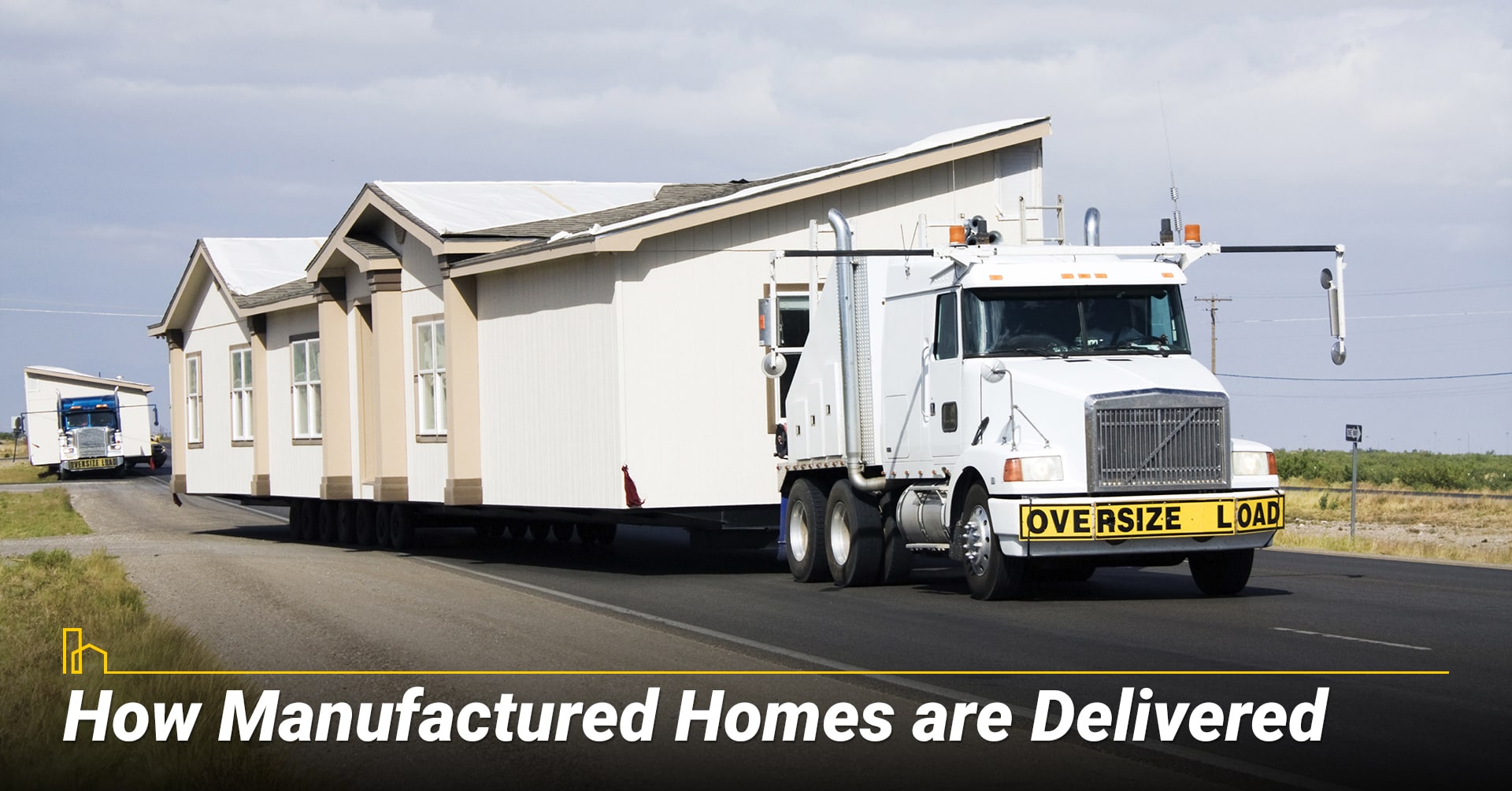
Certainly, the most dramatic part of the manufactured home process comes when the home is loaded onto wheels and sent down the highway. Here is what the delivery entails (source: manufacturedhomes.com):
- a) Planning. The manufacturer typically arranges delivery with a licensed transport company, which plans a route from the factory to your homesite.
- b) b) Preparation.The site is prepared as needed before the delivery and marked for positioning.
- c) c) Delivery. You or the dealer meet each delivery to inspect and note damage before signing the delivery receipt.
- d) Set-up. The set-up crew—working for the retailer or contracted by them—installs vapor barrier, sets tie-down anchors, removes plastic sheathing from the sections of the home, and positions the sections using rollers or jacks.
- The home is raised temporarily as concrete blocks or steel piers are put in place. The tires, axles, and hitch are removed.
- Stanchions (upright support bars) are attached to the home’s frame to help distribute the weight evenly. Lags and bolts attach the floor and ceiling.
- The floor is leveled by adjusting screwing jacks, and tie-downs are fastened to ground anchors.
- e) Trim-Out. Utilities are connected from section to section, and the roof sections are attached, sealed, and capped. The final pieces of trim, siding, etc. are added.
- f) Utilities. Utility lines are connected to power sources at the sight; utilities cannot be turned on until the home has passed inspection.
- g) Interior. Internal finishes are completed, such as carpeting and drywall.
- h) Testing. All systems are tested to make sure they work well.
- i) Clean-up. The home is cleared of trash and debris and cleaned.
- j) Inspection. A local agency inspects the home and issues a Certificate of Occupancy (or a Correction Notice indicating what needs to be fixed before re-inspection). Once the home passes inspection, the utility company activates the power.
- k) Walk-Through. The retailer walks through the home with you to inspect it, then hands over the keys to your new home.
Conclusion
There is a lot to understand before you embark on your manufactured home journey. We have given you a good start toward understanding the ins and outs of the industry. Use this information for perspective when researching and shopping. You’re on your way to purchasing your new home!
10 Most Affordable Places to Live in Oregon
Geographically, Oregon boasts dramatic Pacific coastlines as well as volcanic mountain ranges. Its climate spans from rainforests along the coast to semi-arid conditions in the central and southeastern regions. The Beaver State is home to both Crater Lake, the deepest lake in the U.S., and Mount Hood, the second-most-climbed mountain in the world…






